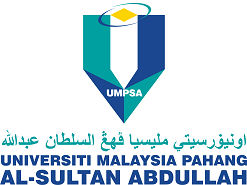EFFECT OF ACTIVATION TIME ON THE PINANG FROND BASED ACTIVATED CARBON FOR REMAZOL BRILLIANT BLUE R REMOVAL
DOI:
https://doi.org/10.15282/jmes.7.2014.7.0105Keywords:
Activated carbon; Pinang frond; activation time; Remazol brilliant blue RAbstract
Activated carbons are regularly used for dye wastewater treatment. They can be produced from various organic materials which have a high level of carbon content. In this study, Pinang frond based activated carbon (PFAC) was produced by using a physical activation process to study the effect of different activation times in the range of 1–7 hours. The optimum PFAC sample was found with an activation time of 3 hours, which gives the highest BET surface area and pore volume of 958.23 m2 /g and 0.5469 mL/g, respectively. This sample shows well-developed pore structure with a high fixed carbon content of 79.74%. The removal of 87.6% of Remazol Brilliant Blue R (RBBR) was achieved for a sample with initial RBBR concentration of 50 mg/L, and 40.8% was achieved with 500 mg/L. The results indicated that the PFAC is very effective for RBBR adsorption from aqueous solution.
References
Dias JM, Alvim-Ferraz M, Almeida MF, Rivera-Utrilla J, Sánchez-Polo M. Waste materials for activated carbon preparation and its use in aqueous-phase treatment: a review. Journal of Environmental Management. 2007;85:833-46.
Sumathi S, Bhatia S, Lee K, Mohamed A. Selection of best impregnated palm shell activated carbon (PSAC) for simultaneous removal of SO2 and NOx. Journal of Hazardous Materials. 2010;176:1093-6.
Gupta V. Application of low-cost adsorbents for dye removal–A review. Journal of environmental management. 2009;90:2313-42.
Lua AC, Guo J. Activated carbon prepared from oil palm stone by one-step CO2 activation for gaseous pollutant removal. Carbon. 2000;38:1089-97.
Herawan SG, Ahmad M, Putra A, Yusof A. Effect of Flow Rate on the Pinang Frond-Based Activated Carbon for Methylene Blue Removal. The Scientific World Journal. 2013;2013.
Bello OS, Ahmad MA, Ahmad N. Adsorptive features of banana (Musa paradisiaca) stalk-based activated carbon for malachite green dye removal. Chemistry and Ecology. 2012;28:153-67.
González P, Pliego-Cuervo Y. Physicochemical and microtextural characterization of activated carbons produced from water steam activation of three bamboo species. Journal of Analytical and Applied Pyrolysis. 2013;99:32- 9.
Ahmad MA, Rahman NK. Equilibrium, kinetics and thermodynamic of Remazol Brilliant Orange 3R dye adsorption on coffee husk-based activated carbon. Chemical Engineering Journal. 2011;170:154-61.
Bouchelta C, Medjram MS, Zoubida M, Chekkat FA, Ramdane N, Bellat JP. Effects of pyrolysis conditions on the porous structure development of date pits activated carbon. Journal of Analytical and Applied Pyrolysis. 2012;94:215-22.
Herawan S, Hadi M, Ayob MR, Putra A. Characterization of activated carbons from oil-palm shell by CO2 activation with no holding carbonization temperature. The Scientific World Journal. 2013;2013.
Nunell G, Fernández M, Bonelli P, Cukierman A. Conversion of biomass from an invasive species into activated carbons for removal of nitrate from wastewater. Biomass and Bioenergy. 2012;44:87-95.
Rashidi NA, Yusup S, Ahmad MM, Mohamed NM, Hameed BH. Activated carbon from the renewable agricultural residues using single step physical activation: a preliminary analysis. APCBEE Procedia. 2012;3:84-92.
Lua AC, Yang T. Effect of activation temperature on the textural and chemical properties of potassium hydroxide activated carbon prepared from pistachio-nut shell. Journal of Colloid and Interface Science. 2004;274:594-601.
Guo S, Peng J, Li W, Yang K, Zhang L, Zhang S, et al. Effects of CO2 activation on porous structures of coconut shell-based activated carbons. Applied Surface Science. 2009;255:8443-9.
Senthilkumaar S, Kalaamani P, Porkodi K, Varadarajan P, Subburaam C. Adsorption of dissolved reactive red dye from aqueous phase onto activated carbon prepared from agricultural waste. Bioresource Technology. 2006;97:1618-25.
Tunc Ö, Tanacı H, Aksu Z. Potential use of cotton plant wastes for the removal of Remazol Black B reactive dye. Journal of Hazardous Materials. 2009;163:187-98.
Baskaralingam P, Pulikesi M, Ramamurthi V, Sivanesan S. Modified hectorites and adsorption studies of a reactive dye. Applied clay science. 2007;37:207-14.
Vadivelan V, Kumar KV. Equilibrium, kinetics, mechanism, and process design for the sorption of methylene blue onto rice husk. Journal of Colloid and Interface Science. 2005;286:90-100.
Staples GW, Bevacqua RF. Areca catechu (betel nut palm): Species Profiles for Pacific Island Agroforestry. 2006.
Sing KS. Reporting physisorption data for gas/solid systems with special reference to the determination of surface area and porosity (Recommendations 1984). Pure and Applied Chemistry. 1985;57:603-19.
Deng H, Yang L, Tao G, Dai J. Preparation and characterization of activated carbon from cotton stalk by microwave assisted chemical activation— application in methylene blue adsorption from aqueous solution. Journal of Hazardous Materials. 2009;166:1514-21.
Wei ITA. Preparation, characterization and evaluation of mesoporous activated carbons derived from agricultural by-products for adsorption of methylene blue and 2,4,6- trichlorophenol. Malaysia: Universiti Sains Malaysia; 2008.
Ahmad M, Wan Daud W, Aroua M. CO2/CH4 and O2/N2 kinetic selectivities of oil palm shell-based carbon molecular sieves. Journal of Oil Palm Research. 2008;20:453-60.
Huang Y, JIN B, Zhong Z, Zhong W, Xiao R. Characteristic and mercury adsorption of activated carbon produced by CO2 of chicken waste. Journal of Environmental Sciences. 2008;20:291-6.
Khattri S, Singh M. Removal of malachite green from dye wastewater using neem sawdust by adsorption. Journal of Hazardous Materials. 2009;167:1089- 94.






